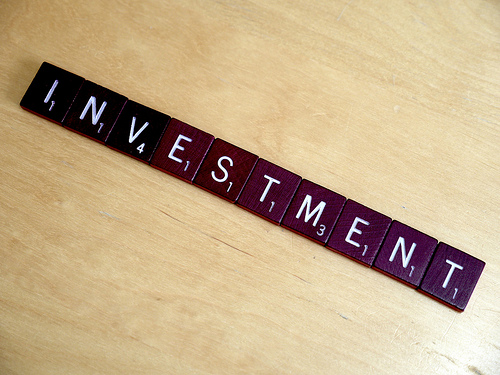If you are using Lean Startup to build your startup, you’ll know the importance of validating the problem you are trying to solve with people who actually have that problem. Steve Blank calls this customer development or getting out of the building.
Recently I have been helping other startup founders out with what I am learning so far on the very awesome platform – that is a startup itself – SoHelpful.me
Earlier this week a really interesting guy called Peter booked a session to chat about his startup and his customer development questions.
I’m no pro – I’m learning this stuff as well and have my own particular weaknesses but over the last year I have forced myself to love customer development and it has been worth it – it gets me out, talking to real people about real problems. Effective customer development is the number one problem I think startups have.
Speaking with Peter about his idea, he shared that he had interviewed about 150 people to hear their biggest problems with the area he was focused on. I thought this was awesome – to actually get out of his house and find 150 people, talk to them and record their responses is pretty impressive. So I had to ask:
Why do you need to speak with me?
He had these responses, but wasn’t sure the next steps were to use them effectively. I asked if he had anyway to contact the same people again and he said he had asked for and received email addresses for about 50% of the people he interviewed. Brilliant!
Of course – like in the classic tale of the beautiful girl at the bar that the guy has been hitting on all night – some of those email addresses might well be fake, but I think there are still a good number that would be genuine. Peter’s idea solves a real problem.
This is where the insight into investment microsteps come in.
Investments 101: Investments, currency and return.
An investment is something you have that you put towards something you want. It can be an asset (incl money) , time , effort or a combination of all three – these are called the currency. The valuable thing you get back is called the return. You invest some currency to make a return – usually something that is greater in value to you than the currency you invested.
How well the investment does is called the ‘Return On Investment’ – usually a ratio or percentage.
Sometimes investments are straightforward.
You invest $100 in a stock and over a year you make $50 on top of your $100. So your ROI is 50%.
Or you spend 15 minutes a day working out and in the summer you have the body that everyone drools over at the beach. The ROI on that is much harder – though not impossible – to calculate. I like to think, like Mastercard, it is priceless.
What are “Investment Microsteps”?
So in customer development, our ultimate goal is to learn and validate the problems that people have and that we – the promising startup – are hoping to solve for them.
We are also trying to validate that they will pay for us solving that problem for them because you can fix problems for lots of people and that is awesome. What is even more awesome is that someone is willing to pay you something to solve that problem for them. This is the monetisation challenge.
Is the solution valuable enough for your customer for them to invest in it? Without this or another source of recurring revenue, your startup is not a business.
Whilst getting clear feedback that people would pay you to solve the problem is the holy grail of customer validation – I notice that we tend to undervalue what I call the microsteps to get there.
When someone agrees to invest some of their currency, they are making an investment decision and expect – at some level – a return on that investment. And in customer development when you have confirmed they are willing to pay you for the problem you validated – that is a major investment.
The smaller investments they make until then – the meetings, the coffees, the 5 minutes here and there, the emails they read, the surveys they take, the email addresses they volunteer are all little investments they make in you and your idea.
I call these the investment microsteps.
Let’s look at an example through this viewpoint:
Imagine you go out to find 10 people to interview about what they find frustrating about ordering pizza.
The firm ‘No’
You approach 50 people , asking each if they would be willing to spare 5 minutes to help you with this research. 30 people each – for whatever reason – say ‘no’.
Those are 30 people who were unwilling at that time to invest 5 minutes of time – a currency – to get any kind of return from you. There is some learning here too – why did they say ‘No’. How might you get them to say ‘Yes’?
The early ‘No’
The remaining 20 people stop and invest the 5 minutes, but when you then request a further investment – would they be willing to give you their email address or telephone number so that you can keep them updated with the progress – 10 say ‘No’. They did not get the return they valued enough from the previous investment to further investment. This could be for a bunch of reasons – understanding what they are is important but a topic for another post.
The More Committed Investors
The final 10 do volunteer their email addresses – they are willing to make the further investment. This doesn’t necessarily mean they will ultimately pay for whatever solution you devise to their problems, but – for now- they are willing to help you as long as you help them. And simply – how you help them is by giving them a return on their investment.
Every Investment Deserves a (Early) Return
How many startup founders who actively do customer development appreciate what just happened? Do you?
Every investment deserves a return – even if that return is an email a week later to say:
Hey thanks for agreeing to get updates, the research is going well and I will have some specific questions for you next week to help me under ….
If you leave it too late – they struggle to remember who you are and maybe even the return that they visualised when they made the investment.
When I get an email from a business I met 2 years ago who now just decided to do something with their email list, I shake my head and giggle – as I click the unsubscribe button. Even when the new approach is made with an offer – say a discount – I still am rarely interested.
By now – if you are using lean startup – you probably realise that authenticity goes a long way. If you engage regularly with people who made an investment in you, then you should do so personally or as personable as possible. That is part of the return value. An example of personable in the case of email is greeting with their first name and mentioning something specific about your interaction
Putting it all together
Recognising that people make microsteps of investment helps you approach the design of your customer development better. You can think ahead about how you might be able to make a valuable return to every investment that is made. Even down to how you appreciate the refusal to make an investment.
I believe – although I have no evidence to back this up – that the more that a person is prepared to invest in your customer development activities the more they care about the problem and the higher the likelihood that they will pay for the solution for their problem. I also believe that whether or not you sign them up as a paying customer , you will end up with a great member of a loyal group of followers that you can come back to – so long as you recognise, respect and return on their investments.
How are you doing customer development?
Do you recognise this insight in your customer development work?
I’d love to learn and share. Please comment below or hit me up on Twitter. Please consider sharing this post – it could help someone you love.
If you would like my help with anything you are puzzled about on your startup, company improvement or software process – hook up with me on soHelpful.me and let’s get a conversation started!
Featured Image By: Simon Cunningham – CC BY 2.0


